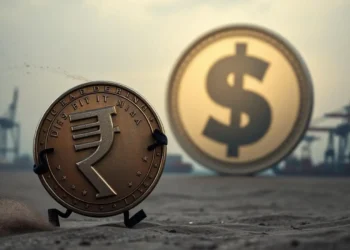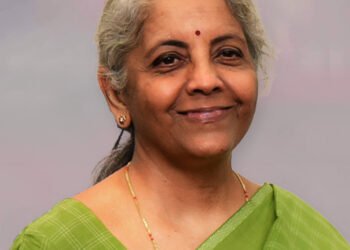According to reports as Finance minister Nirmala Sitharaman said on Thursday that India is the fastest growing economy despite the pandemic and asserted that the government managed the economy well.
“Our recovery has been fastest and sustained among all economies…,” she said, adding that the recovery momentum will continue in the coming year. She said the government had focussed on capital expenditure because of its multiplier effect on the economy and to restore growth. “The Indian economy is projected to grow at 9% in the next financial year; the US is expected to grow at 4%,” she said, replying to the debate on the budget in the Lok Sabha.
On divergence in growth estimates in the Economic Survey and the budget, she said the survey had used advanced estimates of the Central Statistics Office that had not taken into account the impact of the third wave of the pandemic. Sitharaman said the government thought it better to spend taxpayer money on capital expenditure, citing a Reserve Bank of India study that said every rupee so spent brought a return of ₹2.45 in the first year and ₹3.14 in the second, the report said.
The finance minister observed that while the government is borrowing money for capital expenditure, it is ensuring that revenue expenditure is rationalised, which she said will grow by slightly over 3% in FY23, showing a visible deceleration.
MGNREGA is Demand Driven
Sitharaman countered allegations that the government has curtailed allocation on social security schemes, specifically the Mahatma Gandhi National Rural Employment Guarantee Act (MGNREGA). “MGNREGA is a demand-driven programme. As and when there is demand, through the supplementary demand for grants, we give the additional required amount,” Sitharaman added.
She said banks had sanctioned loans worth ₹3.1 lakh crore under the Emergency Credit Line Guarantee Scheme for the MSME sector that was impacted by disruptions due to the pandemic. The scheme has been extended till March 2023. “Those MSMEs who still want to benefit out of it are welcome to use it…the amount of loan sanctioned under the ECLGS is ₹3.1 lakh crore and guarantee space is still ₹1.4 lakh crore,” she said in her 100-minute reply, the report said.
Andhakaal and Amritkaal
Hitting out at the Congress party, Sitharaman said that the UPA term was India’s ‘Andhakaal’, citing double-digit inflation, poor management of foreign direct investment and rampant corruption.
She claimed the government had managed the economic crisis better than UPA’s management of the global financial crisis in 2008-09 despite Covid being one of the worst events India had faced so far. She quoted data on key macroeconomic indicators after the financial crisis of 2008 and pandemic years to highlight better management of the pandemic-induced crisis.
We Managed Economy Much Better
“Today, in spite of the crisis, reduction of GDP, Consumer Price Index is well contained, we have managed the economy much better,” the FM said, noting that despite disruption to the supply chain, inflation in 2020-21 was 6.2%, whereas in 2008-09, it was 9.1%.
The finance minister enlisted the initiatives and schemes of the Narendra Modi government, including Jan Dhan, rural electrification and Gati Shakti, adding: “All these schemes are paving a way towards Amritkaal”, the report said.
Sitharaman highlighted the fact that 44 unicorns – startups with a valuation of $1 billion or more – have been identified in India between 2020 and 2021. “They have created wealth. They showcase India’s talent and innovation,” she said. The government, she said, had removed 25,000 compliances and repealed 1,500 laws for ease of doing business.
BSNL and Umbrella
The finance minister said the revival of BSNL is due to the policies followed by the Modi government, while non-cooperative measures followed by the UPA had led to the decline of BSNL’s market share to 7.16% from 19% in 2015, the report said.
Defending the duty hike on umbrellas, Sitharaman said around 25 million umbrellas were being imported from one country and the measure will support the domestic industry. (Economic Times)















